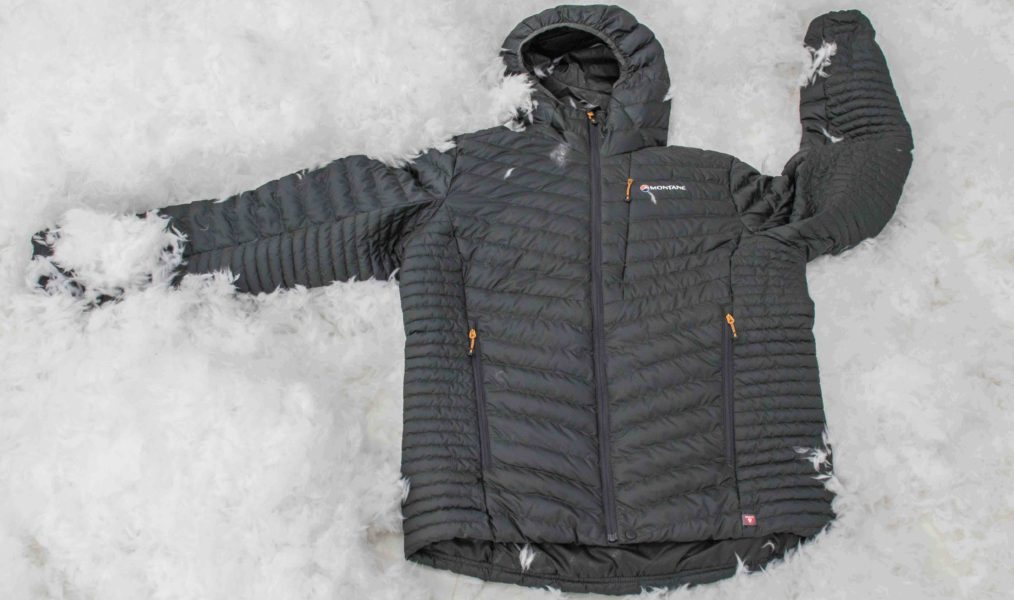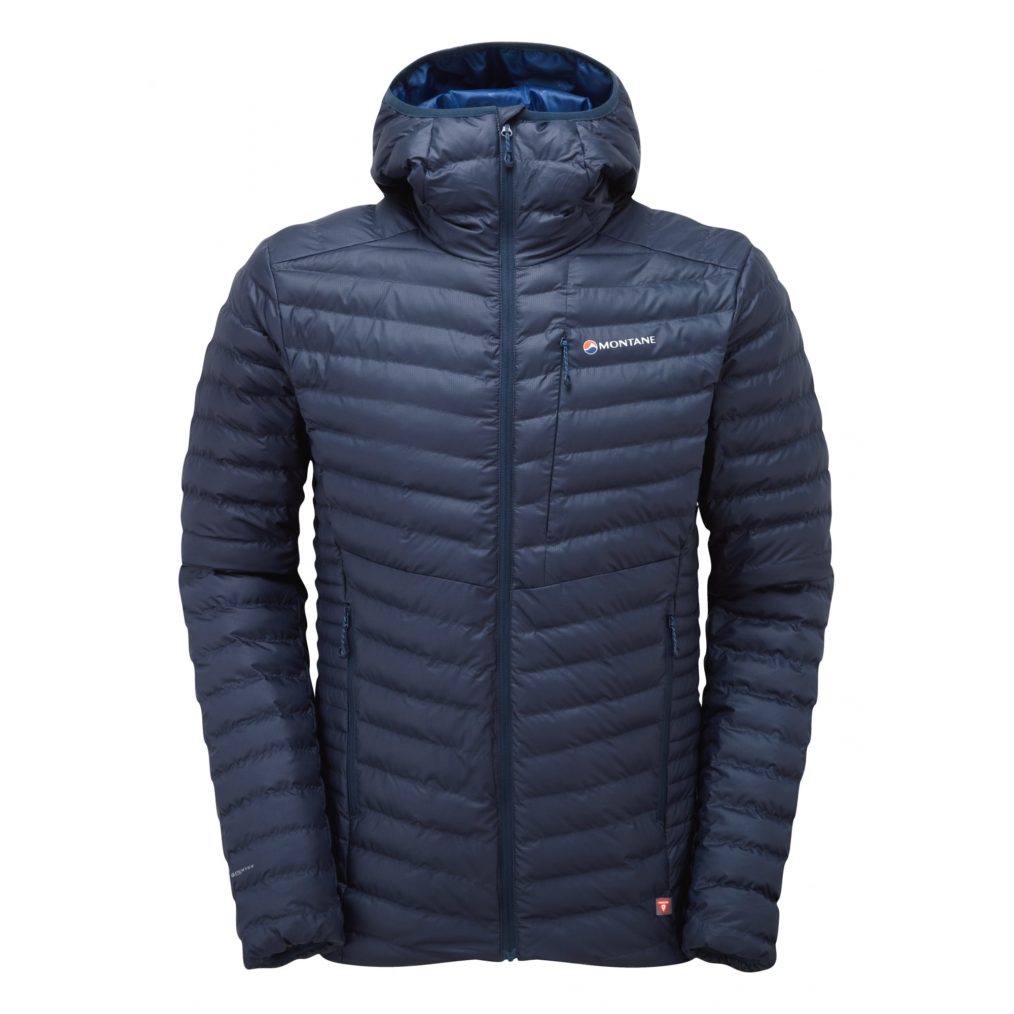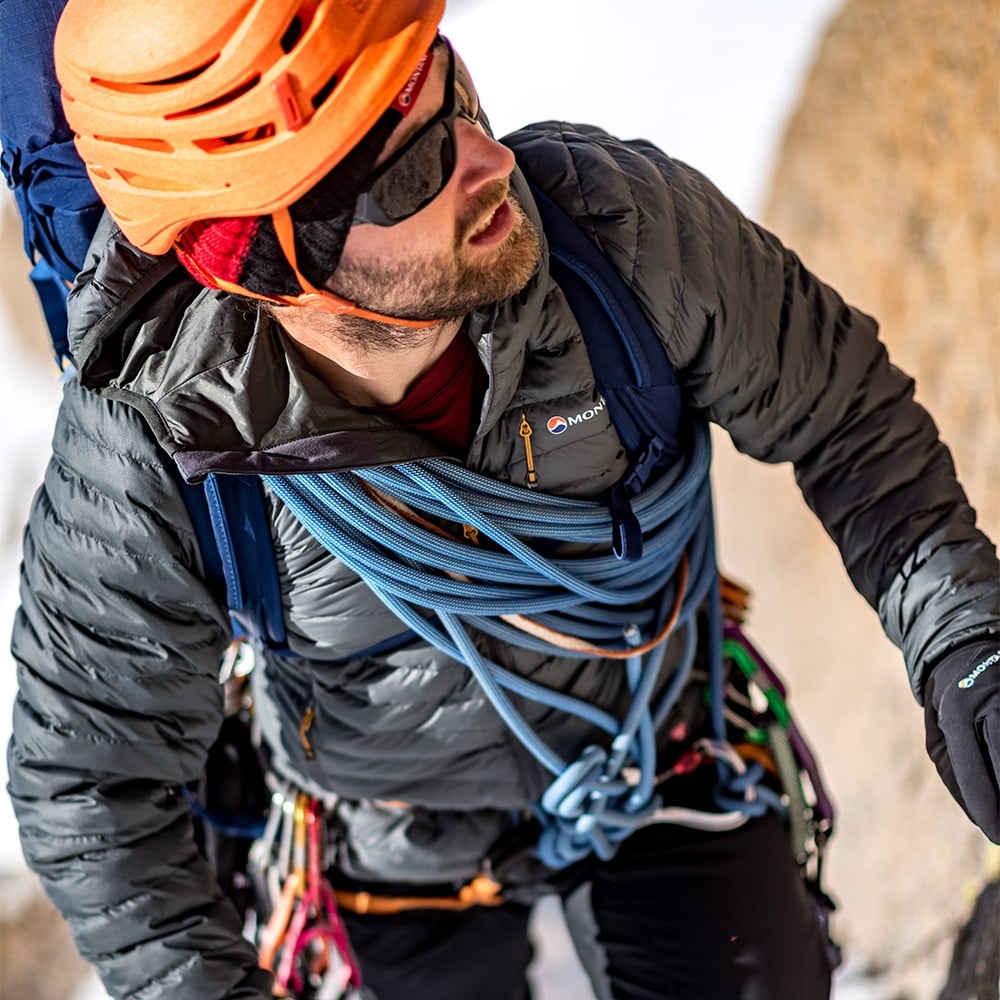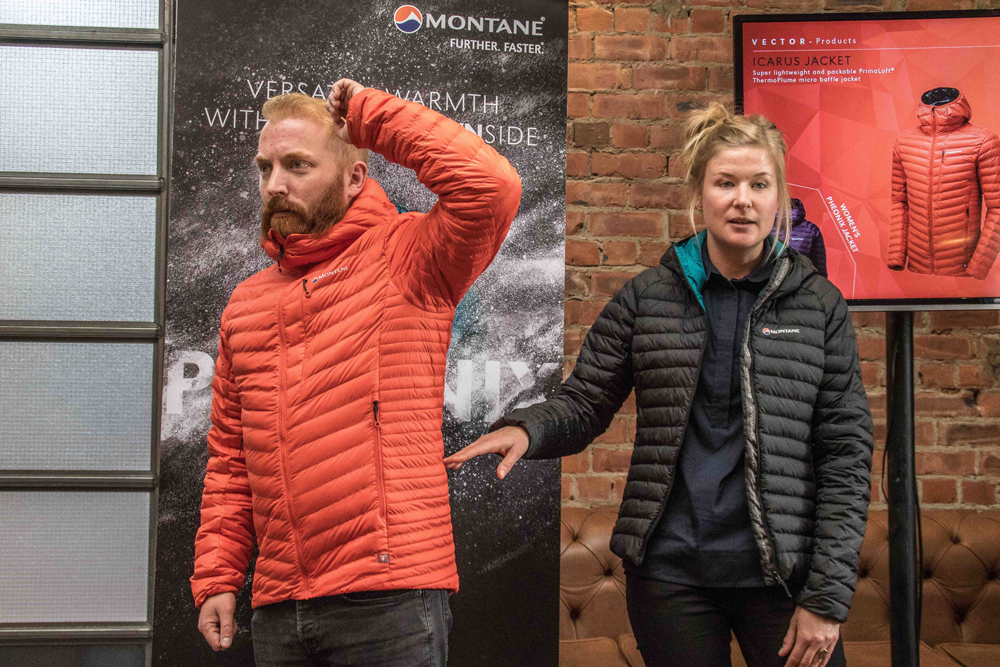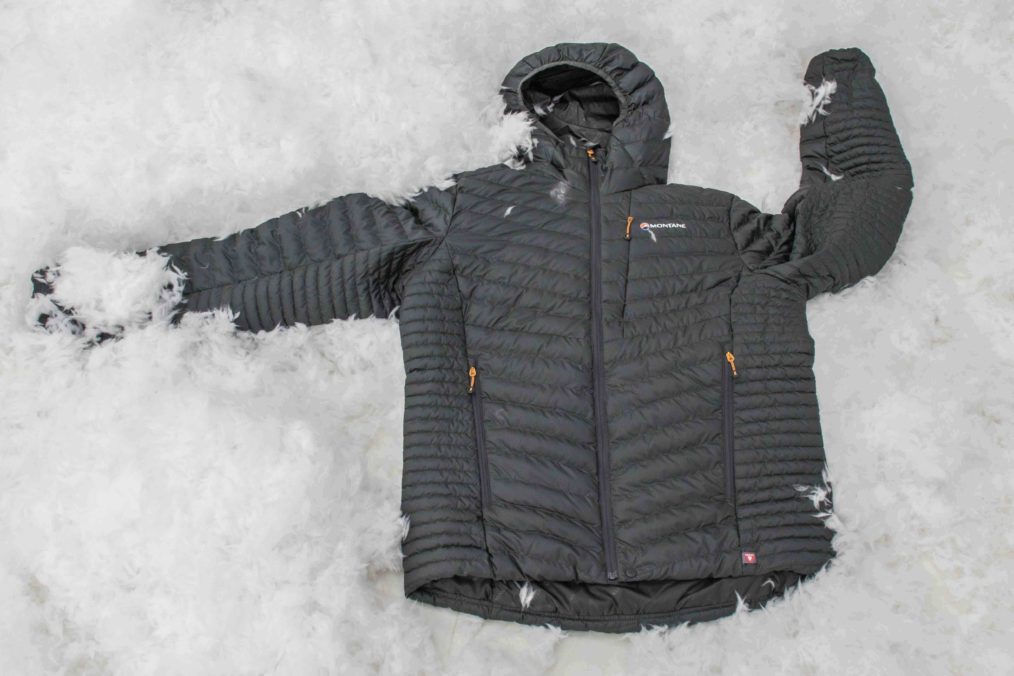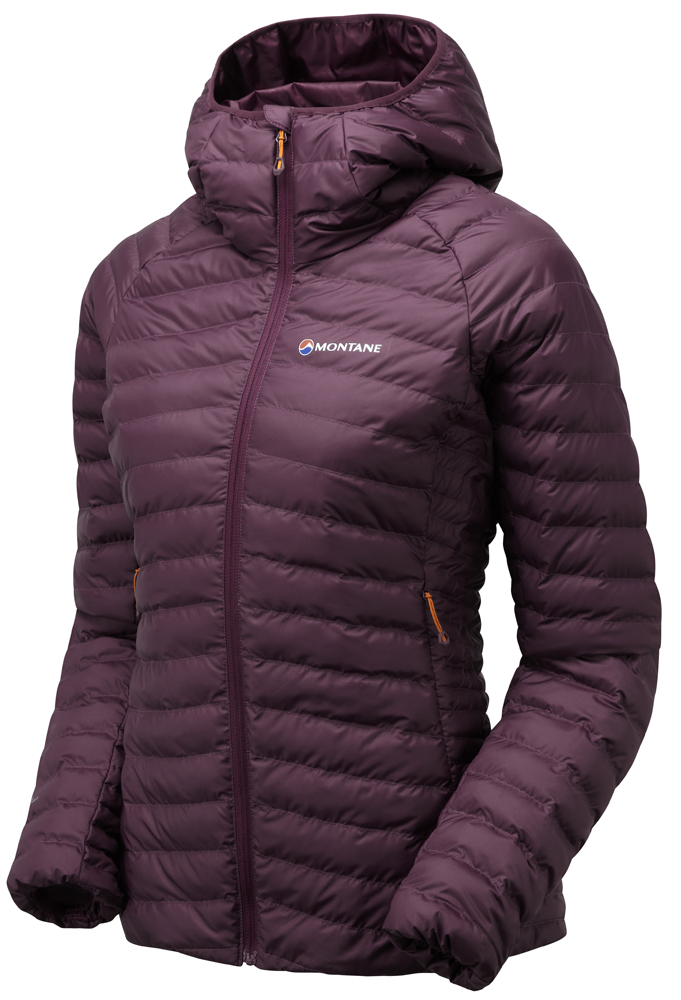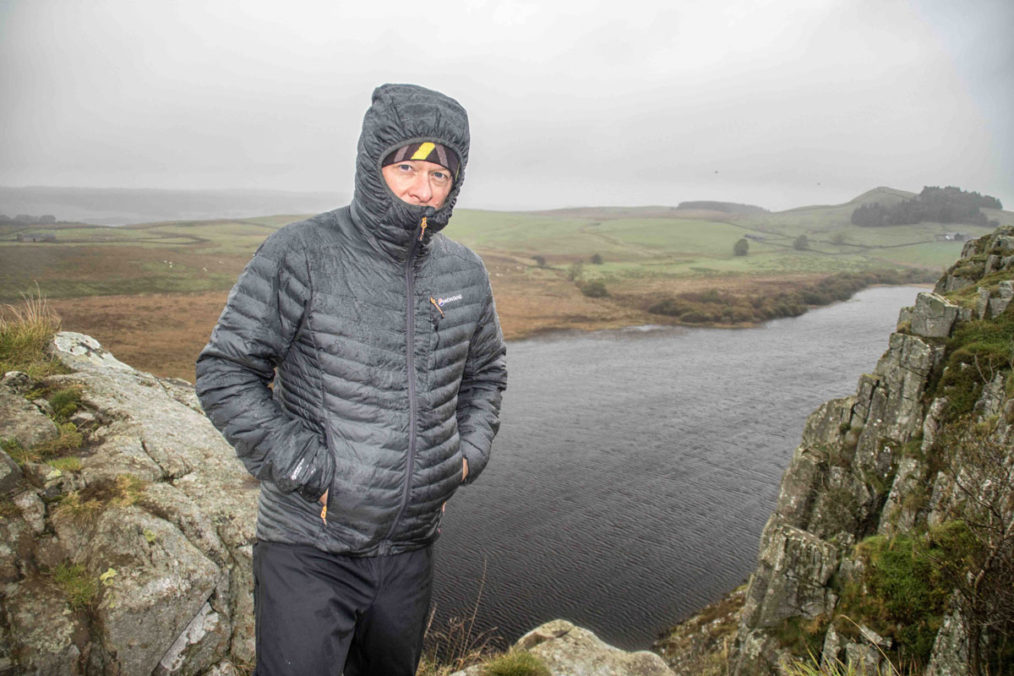We test out two insulated jackets using PrimaLoft's new ThermoPlume insulation – the Montane Icarus (men's) and Phoenix (women's) jackets
For all the advances in water-resistant down insulation in recent years, synthetic still reigns supreme when you know that you will be experiencing particularly damp conditions – and we British know that better than anyone!
Not only does synthetic insulation keep you warmer than down (even the hydrophobic type) when wet, it also dries out quicker – and the argument is becoming ever more persuasive with the latest generation of synthetic insulations which are beginning to approach down in terms of its warmth-to-weight performance and packability. One of these new technologies is PrimaLoft ThermoPlume. ThermoPlume mimics the structure of down using synthetic fibres, and the performance is said to be the equivalent of 550-fillpower down. Montane are the first to use this technology in the UK, in their men’s Icarus Jacket and women’s Phoenix Jacket, and we were lucky enough to get our hands on some early samples to try out.
ICARUS AND PHOENIX
Montane are a dab hand at the ‘micro-baffle’ style of insulated jacket, with models like the Featherlite Down Jacket and Featherlite Micro Down Jacket being popular items in their range, and the new ThermoPlume models follow the basic blueprint, except that the filling is considerably different, and the price is much keener!
The Phoenix and Icarus are very similar in design (and identical in materials), aside from the fit and the fact that the Phoenix omits a chest pocket, for obvious reasons, but compensates by adding an internal zipped pocket. The outer of both jackets is made from windproof and water-resistant Pertex Quantum ECO, while the soft-feeling liner is 100% recycled PEAQ synthetic ECO fabric, which Montane say is very breathable and fast-drying. The ThermoPlume filling is contained within narrow baffles on the torso and hood, and even narrower ones at the sides and under the arms. The idea is that the narrower baffles give more freedom of movement where you need it most. The hood is insulated too, and is intended to be worn under a helmet. There are no adjustors on the hood, but it is elasticated and fits snugly around the face. Similarly, the hem of the jacket is elasticated rather than having adjustors. Weightwise, the Icarus comes in at 581g and the Phoenix 438g.
IN USE
We’d had a great demonstration of what the Icarus and Phoenix could do at the UK launch of the products, where the drizzliest of Northumberland days wasn’t able to get the better of the jackets. We’d expected to be kept warm even in that minging weather, but hadn’t expected to be completely bone-dry underneath after a couple of hours of relentlessly wet weather. Since then we’ve been wearing the jackets a lot, and have found them really durable, a good weight and warmth, and ideal for day-to-day use whether on an expedition overseas or for UK outings. In terms of sheer performance, they are not up there with the lightest/warmest down jackets of course, but that’s not the idea. If an ultralight insulation layer for alpine missions is what you’re after, this isn’t it. If, on the other hand, you want a dependable jacket that’ll keep you warm (and mostly dry too) in damp conditions, then these jackets should be on your shortlist. It’ll be interesting to see how synthetic insulation develops in the next few years, but for now, it feels like the future is already here with the Icarus and Phoenix.
VERDICT: Durable and remarkably weatherproof insulated jackets that herald an exciting new era for synthetic insulation


